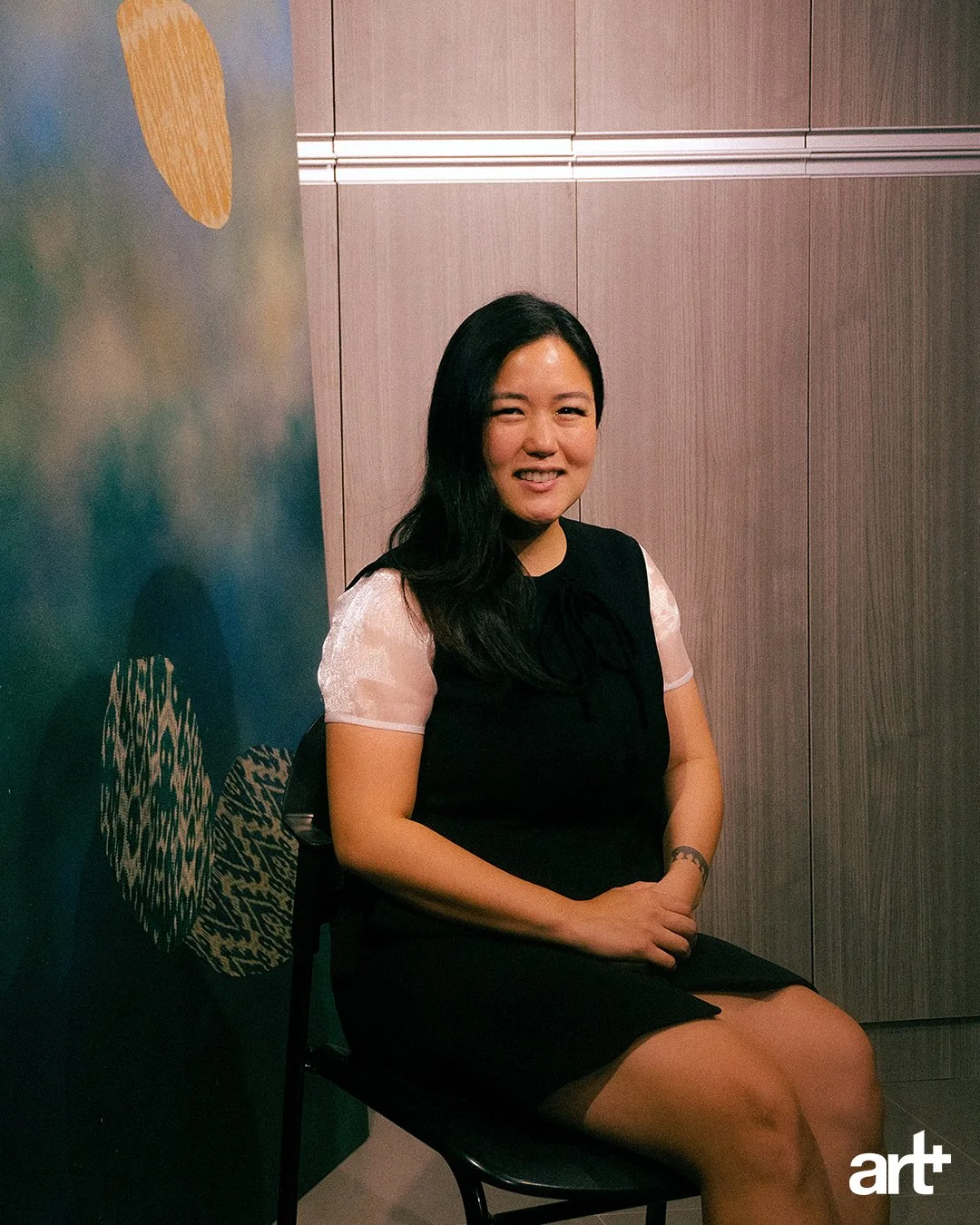Weaving Society Together
Visual artist and entrepreneur Melissa Yeung-Yap explores the significance of culture and travel in her journey of highlighting indigenous talents in her art.
Words Sophia Pangandian
Photography Kim Albalate
With minimal light shone upon them, the craft of indigenous communities are always most likely positioned in a place of curiosity. Melissa Yeung-Yap is here to feed that collective wonder, as she incorporates the communities she serves and interacts with in her art.
A background in anthropology carved a path for Melissa to engage with development, indigenous, and cultural communities, exposing her to a strong drive to promote their craft. This track that she treads on has become representative of her advocacy, alongside a found purpose of utilizing her art as an avenue to amplify the voices of the communities she serves. Inevitably, the link that advocacy and purpose have interlaced induces a greater level of inspiration in Melissa’s process of creating art.
Lang Dulay, a National Living Treasures Award recipient and a Filipino traditional weaver of the T’Nalak, was Melissa’s earliest interaction with a remarkable icon in indigenous communities. She recalls how Lang Dulay paved an avenue for her to realize her advocacies, as the traditional weaver told her that their craft is a national treasure, yet financial sustainability is a challenge to preserving the T’Nalak.
Melissa discerned that this is something she would want to invest herself in. “When I grow up, my dream is to be able to buy a lot of these things, so they will be able to comfortably continue what they are doing,” is the thought that strongly echoed in her mind at the time. Eventually, this perception served as her anchor in moving towards her artistic journey.
Melissa is no stranger to having a love for travel. As an artist, stepping on new and unfamiliar places opens up the creativity that functions within the corners of her brain and eyes. She discovers the possibilities of how to incorporate her experiences in her art, like how a material that she has stumbled upon can be applied to her work. Interacting with different artists is something that Melissa is also inclined with, as she relishes in seeing how one processes their emotions into something tangible and perceivable by everyone.
The dynamic of tourism and art is also essential in the aspect of travel for Melissa. “When we go around different places, we also want to see different things. New things we want to be excited about. We want to look at interesting things. And art plays such an important role in that.”
Having experienced exhibitions both here in the Philippines and in other countries like Singapore and Japan, encounters with a wide range of audiences is a customary component of Melissa’s life as an artist. In her interactions with fellow Filipinos, she aims to communicate a certain goal with her art. “Of course my goal is to really be able to substantially create an impact–a positive impact among the communities.”
She finds that the ecosystem has been very empowering, with the bonus subset of Filipinos composed of collectors, curators, and art galleries that persistently believe in her and give her an opportunity and space to showcase her art.
As for non-Filipinos, Melissa shares that she is delighted with their responses. She receives reactions that are the same as to what she would also offer when in different counties with different pieces of art. Having interactions where non-Filipinos uncover what the Philippines and its art comprises, Melissa expresses, “I really want my art to be that voice or to be like a window for appreciation for what we have.” Melissa’s art features crafts of the Philippines that she has a personal appreciation for, and to her, having non-Filipinos also perceive what she admires ingrains a meaningful experience.
Melissa is part of the Department of Tourism’s special exhibition in the upcoming MoCAF, and she finds it an honor to be able to represent part of the Philippines with her art.
She hopes that it will boost tourism by having the opportunity to exhibit what she loves about the Philippines. “If my art can pave the way for people to be curious, who is actually behind those weaves, that’s going to be something that will definitely hit the purpose of why I’m creating art in the first place.”
For her piece, Melissa prepared a particular feature of an indigenous weave in the Philippines: the T’Nalak from South Cotabato, a place that is dear to her because of her interactions with the T’boli community.



